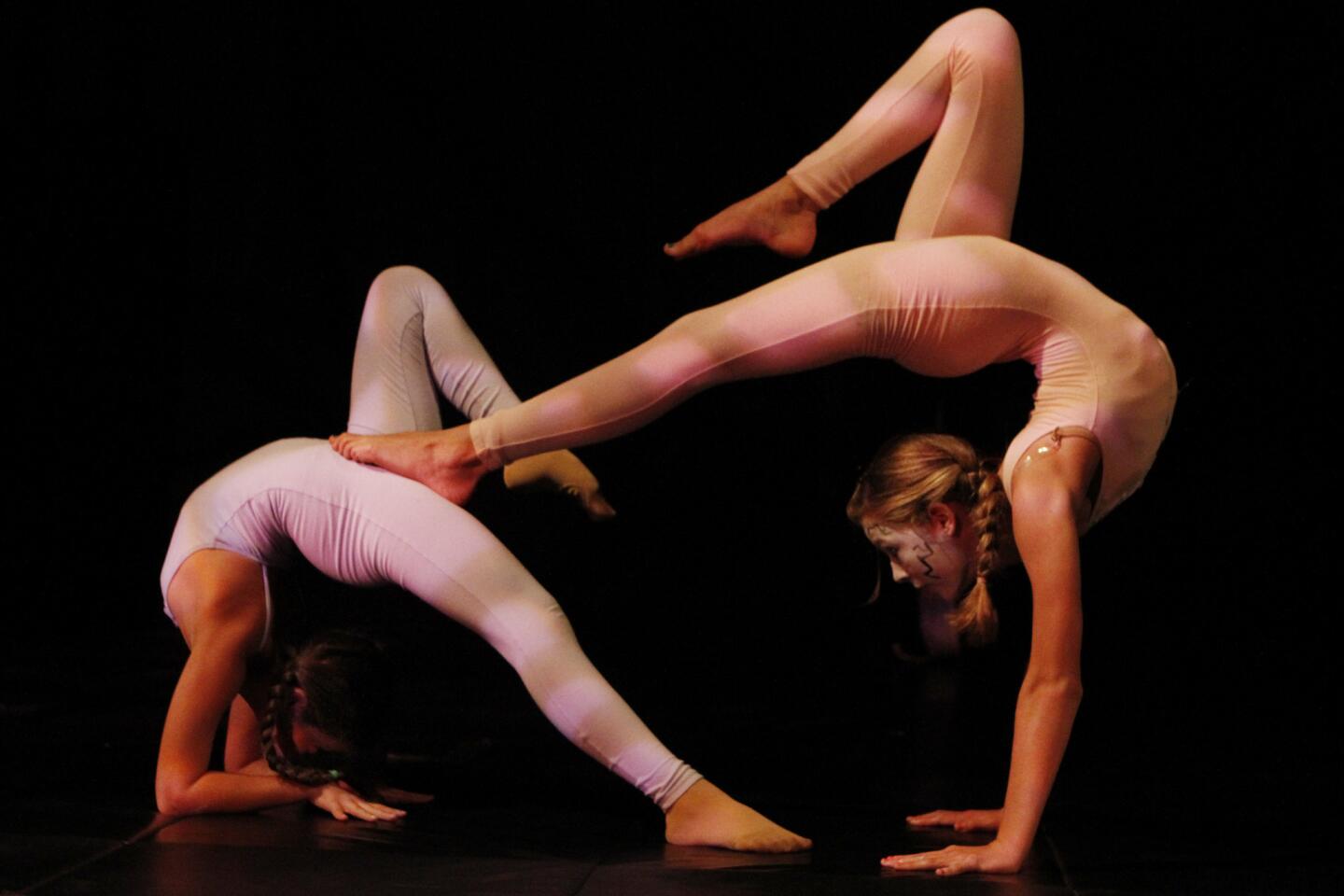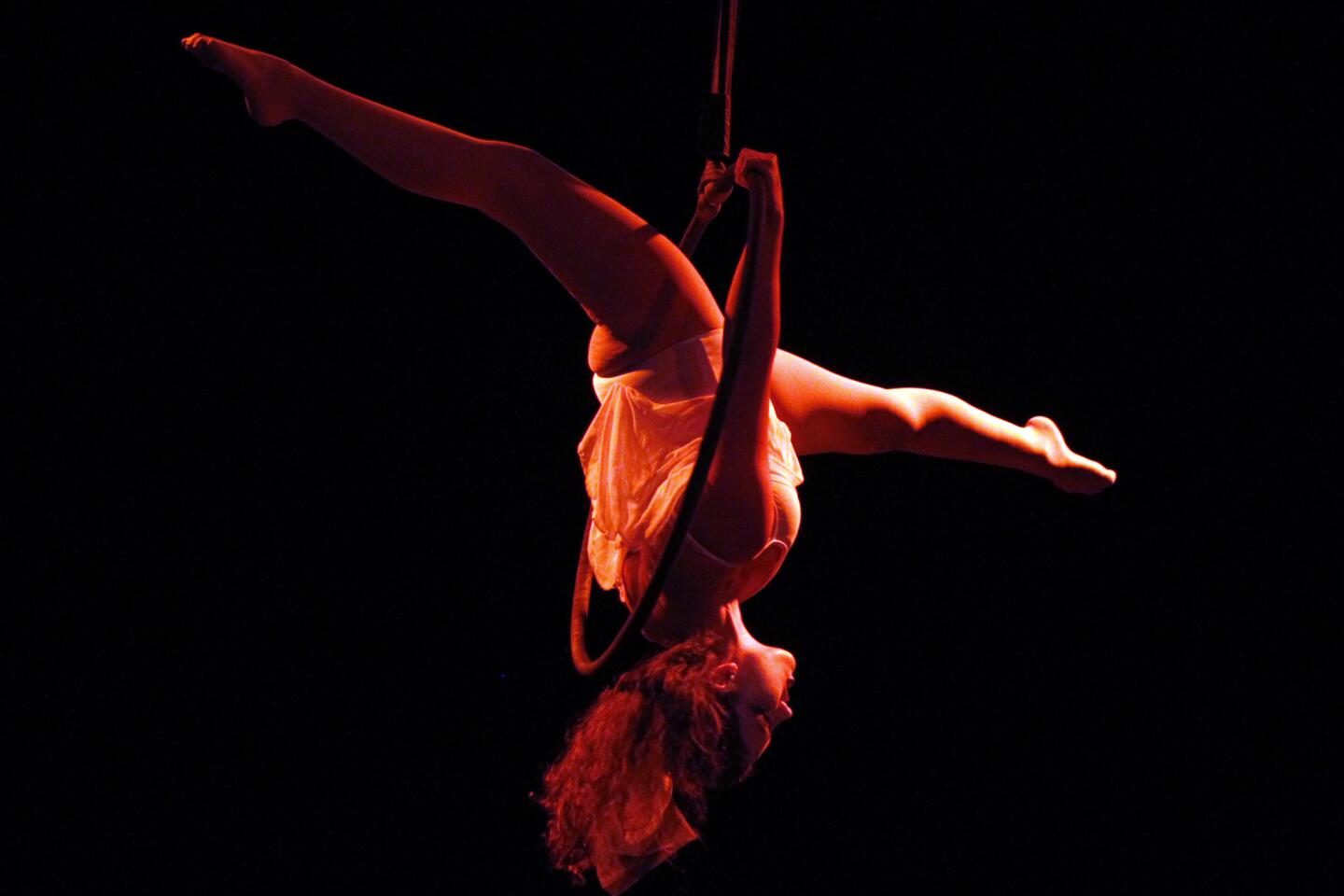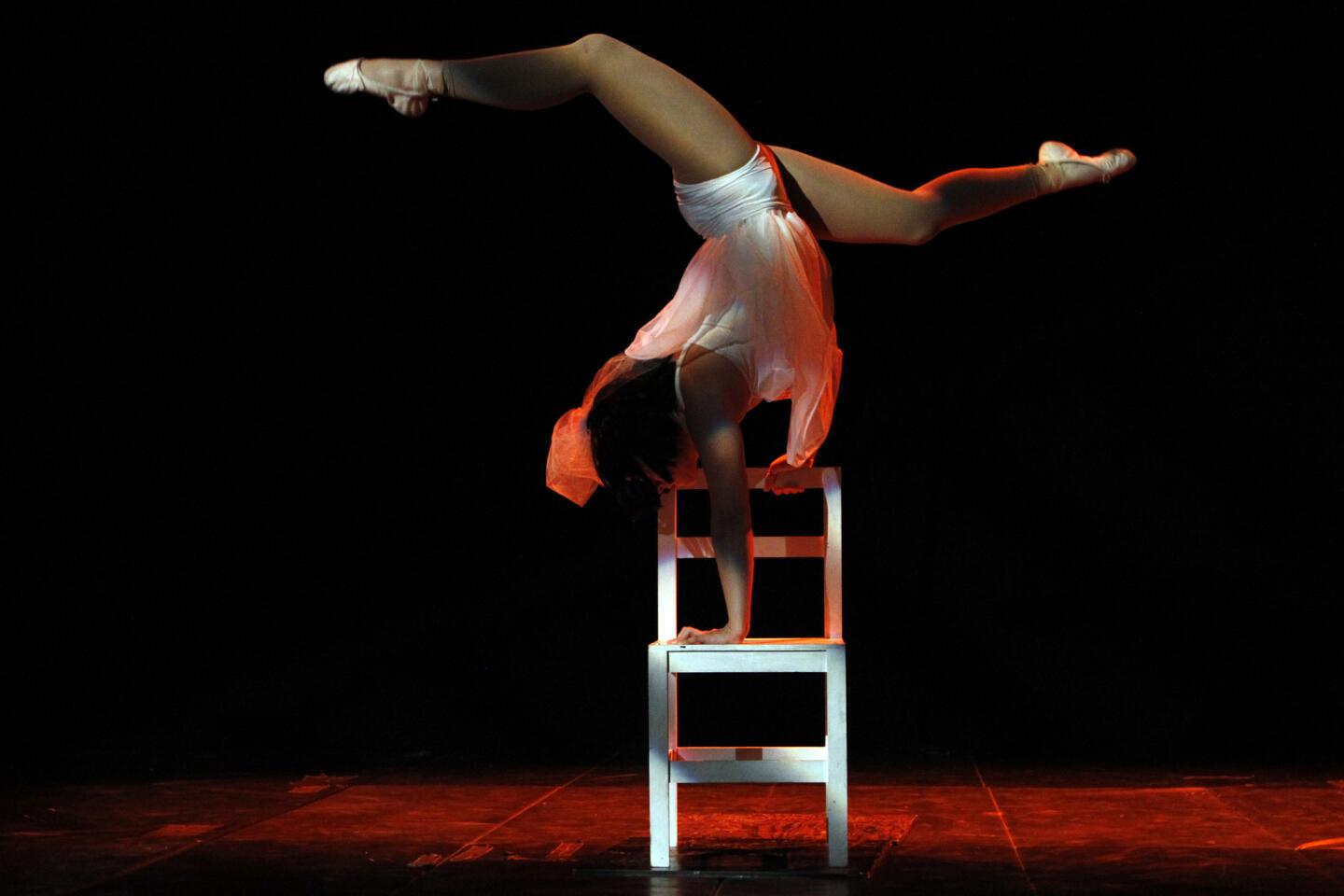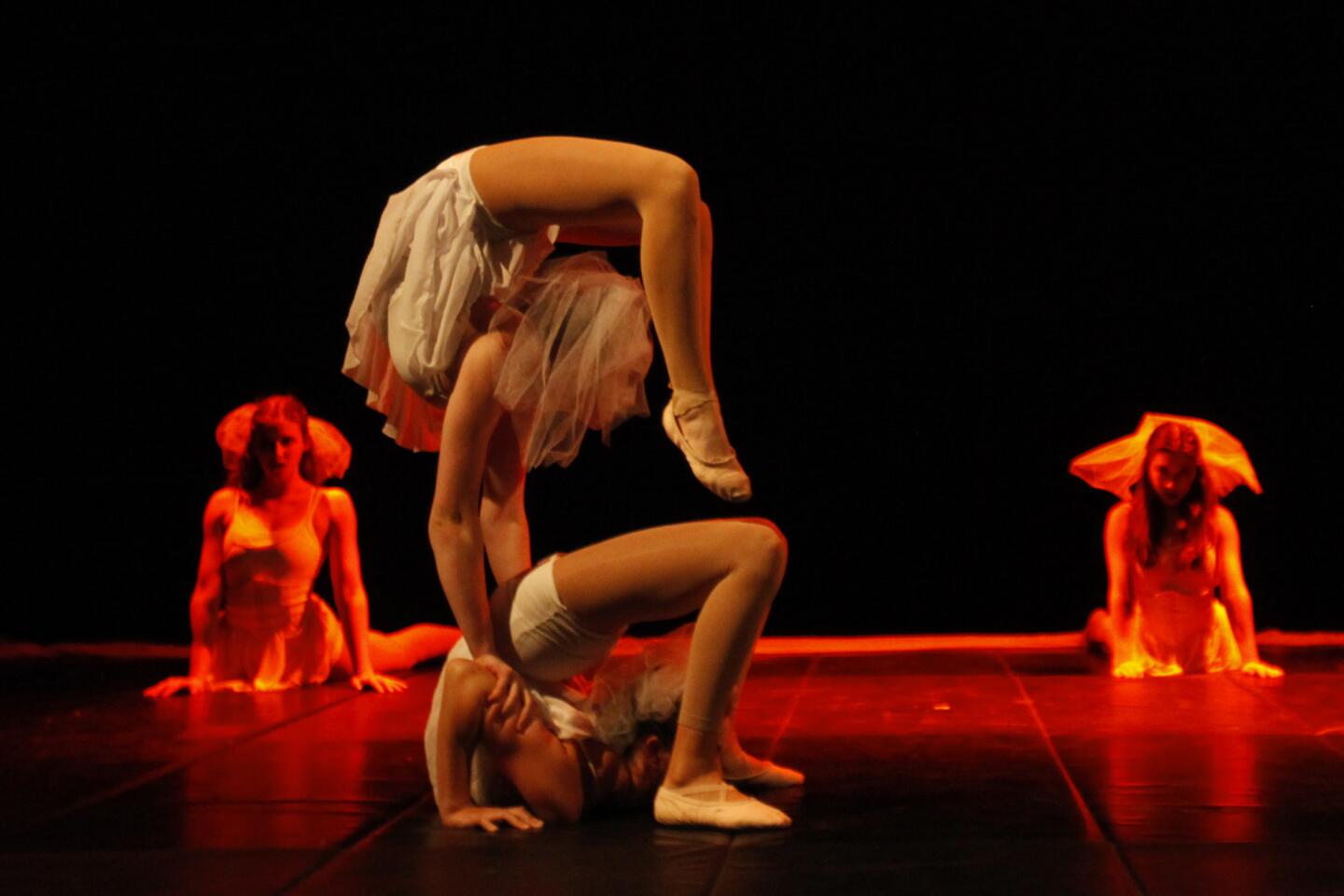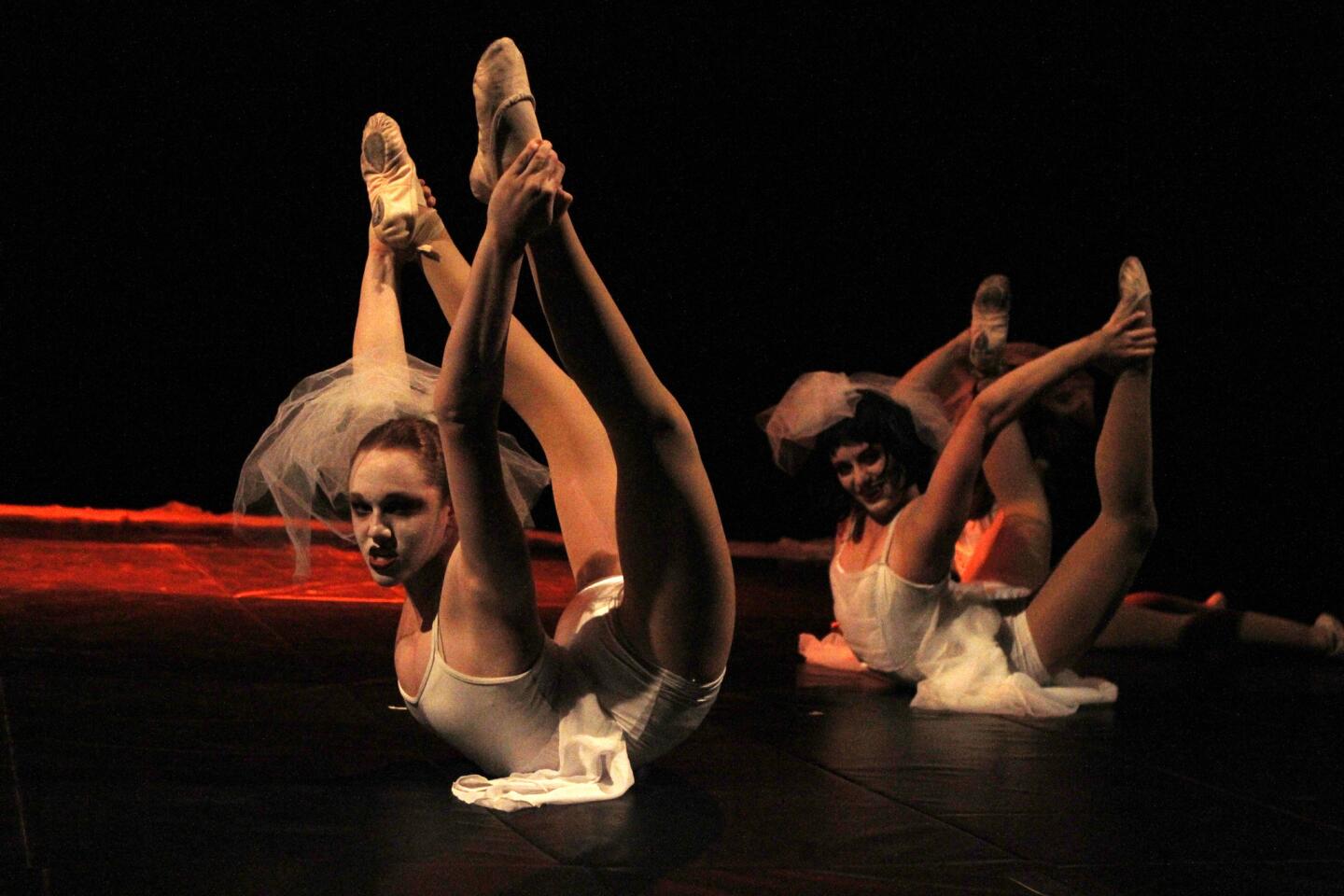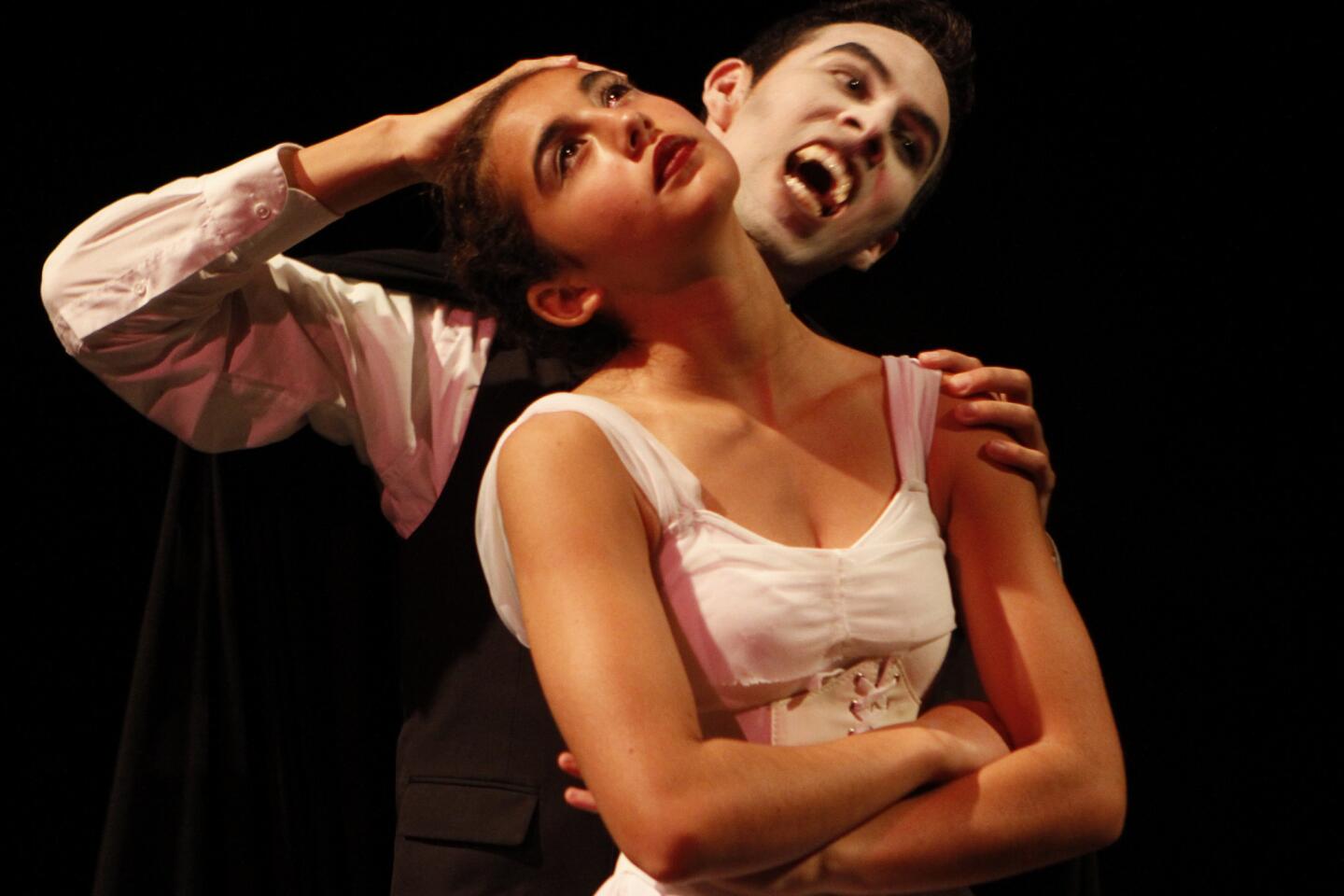Kinetic Theory fosters young circus strengths in ‘Dracula’
Kinetic Theory’s theatrical take on Bram Stoker’s “Dracula” brings the story a uniquely fitting supernatural flair.
Dracula ascends a rope upside down. Vampire brides fold into hyper-extended balls and roll eerily toward the audience. Vampire hunters, entangled several feet in the air by the count’s power, flip around wildly to free themselves while suspended from the ceiling.
There are no wires or special effects in “Dracula, a Symphony of Terror,” running twice every Saturday through the end of October at Kinetic Theory‘s circus school, in a series called “Hauntings.”
PHOTOS: Developing as young artists in the circus world
The 13- to 25-year-olds in the troupe train year-round to pull off these high-level physical skills, and the program offers all circus concentrations, including aerial work, acrobatics and contortion, and juggling.
Between the explosion of Cirque Du Soleil shows and live theater calling for more circus artists, there are many professional opportunities for these performers.
But Kinetic Theory director and founder Stephanie Abrams said she wants her students to develop beyond their trick catalog. The program aims to provide a well-rounded theatrical experience for students, looking beyond their mastery of skill to help them evolve as professional artists.
PHOTOS: LA Opera through the years
“They’re not just learning tricks, but they’re really learning about the process,” she said. “Ultimately we want the show to be good, but it’s more important to us as coaches that they have an understanding of how to create and how to deliver.”
Of course, skills aren’t overlooked. Troupe members must audition to get into the program, and will train anywhere from nine hours per week in the regular troupe to 25 hours per week if they’re accepted as an apprentice.
Students go deeper into their disciplines by setting skill goals and working with a range of veteran coaches -- some with years of Cirque Du Soleil performances on their resume -- in order to master them. A trick won’t make it into a show unless the student has it down on time.
PHOTOS: Hollywood stars on stage
The result is a solid performance, playing to the strengths of each cast member while still honoring storytelling. Abrams, whose background is in theater, mime and contortion, makes sure students give story, character and relationships strong consideration.
“When people see somebody doing circus, especially really well, they already lose themselves in that moment of what this performer is doing,” Abrams said. “Even if they’re not delivering a story or a character. Then when you add those theatrical elements, it gives a whole other level of experience.”
Theater and circus are balanced well in “Dracula”; the storylines and show experience are clear and exciting enough to engage Halloween revelers even before the spectacle of circus tricks come into play. Performers are not just parroting what they’ve learned, but using their newly developed skills in a context that suits them and serves a purpose in the story. This is no accident.
CHEAT SHEET: Fall arts preview
“[Students should] try to understand what the audience’s experience is,” Abrams said. “A lot of them, when they first start off, they’re like ‘OK, these are all the tricks I want to put in, I know I want to do this, this and this.’ And I’m like, ‘Well how do you know you want to do that if you don’t even know what you’re trying to say?’”
The same idea is applied to students in the youth troupe, ages 8 to 13, who perform a showcase of their work before each “Dracula” matinee show at 2 p.m.
“We wanted to make our own story,” said Alison Lockfeld, 22, a professional aerialist who trained through Kinetic Theory and has been coaching the youth troupe for three years. “The kids gave me things they wanted to see in the show, and we did a lot of exercises. What’s my character’s name? How do they move? How do I move describing those things?” Using a door as a device and dressing the kids as monsters, maids, creepy dolls and a dog, the workshops eventually morphed into a Halloween story.
The younger students move on to the pre-professional program when coaches think they’re ready. Some students go this route and stay at the school for years; others find the program when they’re older.
For some young artists, Kinetic Theory is also a refuge.
Javier Soto, who plays Dracula in the show, came to the troupe four months ago, moving from Seattle with a gymnastics background. Soto, 25, grew up as a Jehovah’s Witness and wasn’t allowed to compete, perform or celebrate holidays such as Halloween.
ART: Can you guess the high price?
After moving to L.A., he began pursuing his performance dreams, building a repertoire of rope and character development. Early in the show, he falls under center spotlight and takes his first solo, climbing up a rope upside down with only his hands to lift him toward the ceiling. “I’m floating up,” he said, “That’s why it’s so slow.”
This is the first time in his life he’d performed onstage.
“Going upside down on that rope is not something you wake up and say, I’m gonna go at it,” Soto said, noting it took four months of building calluses and courage.
Soto said he is enjoying the freedom to explore himself in a safe environment that respects his creativity, rather than pressuring him to go commercial.
“A lot of companies won’t do that,” he said. “You’re a robot, this is your skill, you do it right now and that’s it. Here they say, ‘What would you like to bring to the show?’”
Playing opposite of Soto’s Dracula, Sydney Bernard, 17, brings an evil giddiness to the character of Lucy -- a challenge for someone whose describes her usual characters as “kinda more monotone and meh.” Trained as a gymnast before joining Kinetic Theory three years ago, she develops her contortion and hand-balancing skills with Abrams 25 hours per week as her apprentice.
She’s developing an individual contortion act that she’s working to bring to the professional cabaret scene in France or Germany.
Bernard is finishing her high school degree online and doesn’t go out, so she has the time to train. “That was a big decision, but I think it’s totally worth it,” she said. “I spend all of my time doing what I love.”
ALSO:
Violin belonging to Titanic band leader to be auctioned
Stradivarius violin missing for three years is recovered
Ennio Morricone to conduct concerts in L.A. and New York in March
Twitter: @msculprit
More to Read
The biggest entertainment stories
Get our big stories about Hollywood, film, television, music, arts, culture and more right in your inbox as soon as they publish.
You may occasionally receive promotional content from the Los Angeles Times.
